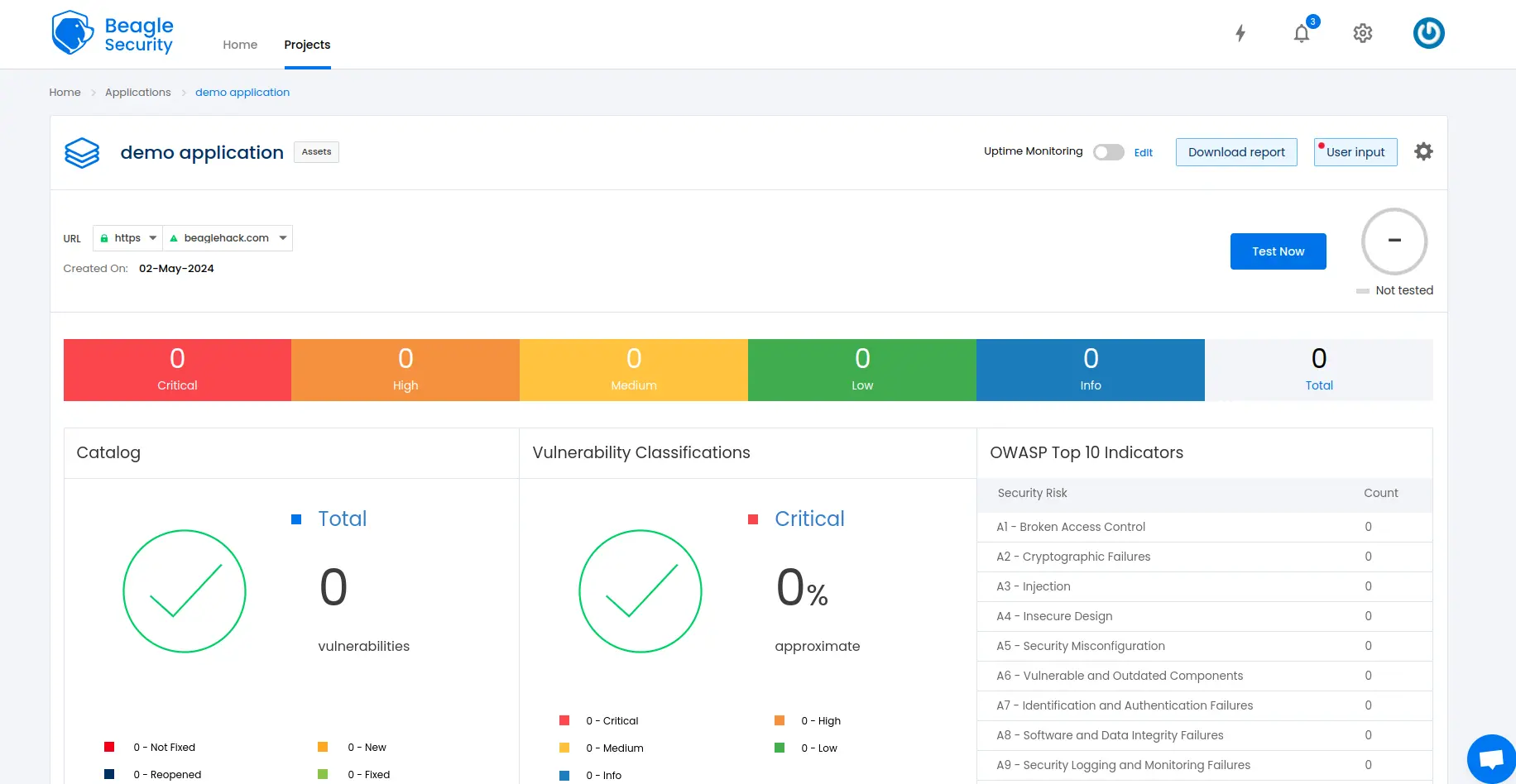
What is penetration testing?
Penetration testing, commonly referred to as pen testing, is a security assessment performed by cybersecurity specialists.
Their objective is to uncover and exploit vulnerabilities present in a computer system. This simulated attack is conducted to detect any weaknesses in the system’s defences that could potentially be exploited by attackers.
A simple example would be a homeowner hiring a locksmith to test the security of their house by attempting to pick the locks and gain unauthorized entry. If the locksmith successfully bypasses the locks and gains access to the house, the homeowner can then identify weak points in their security measures and take steps to reinforce them.
What is black box penetration testing?
A black-box penetration test is conducted by a third party, wherein a security expert simulates hacker behaviour with no prior knowledge of the target system, except for publicly available information.
The term “black box” signifies the test’s starting point devoid of any information, aiming to discover and exploit vulnerabilities as an external entity. Prior to the testing, the security engineer lacks access to source code, internal data, system structure, or application design, except for what is publicly accessible.
Apart from Black-box penetration testing there are two other kinds of penetration testing which includes Gray-box and White-box testing.
All these pen tests represent varied approaches to simulating hacker attacks on a network and identifying and remedying vulnerabilities. Ideally, black-box testing is preferred as it closely mirrors a hacker’s approach to network infiltration.
White-box penetration testing, or open-box penetration testing, stands in contrast to black-box testing. In a white-box test, pen testers possess complete knowledge of and visibility into the target IT environment.
Grey-box penetration testing falls between black-box and white-box testing. During a Grey box pen test, testers may have limited or partial knowledge of their attack target.
Depending on the specific test, grey box pen testers may possess some knowledge about the entire system or extensive knowledge about only a portion of it.
When do you need a black box penetration testing?
Black-box penetration testing is typically needed in scenarios where organizations want to assess their cybersecurity defences from an external perspective, simulating the actions of a real attacker with minimal prior knowledge of the target system. Here are some situations where black-box penetration testing is particularly beneficial:
1.Real-world simulation
Black-box testing provides a realistic simulation of how an external attacker would approach the system, making it valuable for understanding actual vulnerabilities and risks.
2. Assessment of external-facing systems
It is useful for evaluating the security of systems, networks, or applications that are accessible from the internet or other external sources, such as web applications, APIs, or network infrastructure.
3. Testing defence effectiveness
Black-box testing helps organizations evaluate the effectiveness of their external security controls, such as firewalls, intrusion detection systems, and access controls, in detecting and mitigating attacks from external sources.
4. Identification of unknown vulnerabilities
Since the testers have limited prior knowledge of the target system, black-box testing is effective for discovering vulnerabilities that may not be apparent from internal assessments or code reviews.
5. Compliance requirements
Black-box penetration testing is often required by regulatory standards and compliance frameworks to assess the security posture of organizations and ensure they meet industry-specific security requirements.
6. Security posture validation
Organizations can use black box testing to validate the effectiveness of security measures implemented in response to previous security assessments or incidents.
Overall, black-box penetration testing is valuable for providing an external, independent perspective on an organization’s security posture and helping identify and address vulnerabilities before they can be exploited by real attackers.
How to perform black box penetration testing using Beagle Security
Black-box penetration testing in Beagle Security is simple and vivid. Beagle Security has four methods of domain verification namely File verification. DNS verification, HTML tag verification and WordPress plugin verification. Here is a brief on how to carry out a black-box penetration test in Beagle Security:
1. Sign up by providing your email address, then verify it to log in and access your account.

2. Add a website URL you wish to security test. Next, you’ll have to verify your domain ownership by any of the four-domain verification methods provided by Beagle Security which includes:
File verification
DNS verification
HTML Tag verification
WordPress plugin verification
3. Following the completion of the domain verification process, you’re ready to start your black-box penetration test using Beagle Security.

Advantages and disadvantages of black box penetration testing
Black-box pen test has both advantages and its own disadvantages. Here are some of them:
| Advantages | Disadvantages |
|---|---|
| Realistic simulation: Mimics the actions and methods of real attackers who have no prior knowledge of the system | Time-Consuming: More time due to the extensive reconnaissance and discovery phase required to gather information about the target system. |
| Identifying unknown vulnerabilities: More likely to uncover vulnerabilities that may have been overlooked in previous assessments | Limited coverage: Limited visibility into the internal workings of the system, which may result in some vulnerabilities going undetected. |
| Effective: Provides insights into how well the system can withstand real-world attacks | Difficulty in root cause analysis: Due to limited insight into the inner workings of the system, it may be challenging to identify the root cause of certain vulnerabilities |
| Objective perspective: No preconceived notions or bias, so it provides an objective evaluation of its security strengths and weaknesses. | Potential for false positives/negatives: Results in false positives and negatives which lead to inaccuracies in the assessment and recommendations for remediation. |
| Compliance requirements: Required by regulatory standards or industry certifications to ensure that organizations meet specific security compliance requirements. | Higher cost: Due to the extensive manual effort and expertise required, black-box testing is often more expensive than other testing methods. |
Common black-box penetration testing techniques
Here are some common techniques used in black-box penetration testing:
1. Fuzzing
Fuzzing involves bombarding web interfaces with unexpected data, whether randomly generated or specifically crafted, to uncover weaknesses in input validation, also known as ‘noise injection’.
This method aims to provoke abnormal program behaviour, potentially exposing flaws in the software’s ability to handle invalid inputs.
2. Syntax testing
Syntax testing evaluates the data input format utilized within a system by introducing inputs containing garbage data, misplaced elements, missing elements, illegal delimiters, etc.
The objective is to assess how the system behaves when inputs deviate from the expected syntax.
3. Exploratory testing
Exploratory testing entails conducting tests without predefined test plans or specific outcome expectations.
Instead, testers rely on the results or anomalies from one test to guide subsequent tests. This approach is particularly useful in black-box penetration testing, where significant findings can shape the overall testing strategy.
4. Data analysis
Data analysis in black-box penetration testing involves examining the data generated by the target application to gain insights into its internal functions. This process aids testers in understanding how the target system operates.
5. Test scaffolding
Test scaffolding is a technique used to automate planned tests using various tools, facilitating the discovery of critical program behaviours that may not be readily apparent through manual testing alone.
These tools typically encompass debugging, performance monitoring, and test management utilities.
6. Monitoring program
Behaviour monitoring program enables testers to observe how the program reacts to different inputs and scenarios.
This approach helps identify unexpected symptoms that may indicate underlying vulnerabilities, with automation assisting testers in efficiently detecting anomalies in program behaviour.
Black-box penetration testing checklist
Here’s a checklist derived from the OWASP Top 10 vulnerabilities to ensure comprehensive coverage in your black box pen test:
Exploit hidden inputs: Identify and exploit all input fields, including hidden ones, to uncover potential vulnerabilities.
Utilize automation: Employ both automated tools and manual testing techniques to detect various vulnerabilities.
Analyze networks: Scan networks thoroughly to identify exposed ports, systems, and services for potential security risks.
Utilize different credentials: Attempt attacks using different credentials, including default or weak credentials, and consider brute-force techniques.
Intercept server-client communication: Try to intercept and manipulate communication between clients and servers to uncover vulnerabilities.
Investigate web app endpoints: Enumerate web application endpoints and directories to discover potential areas for further investigation.
Test for CVEs: Evaluate for common web vulnerabilities like SQL injection, Cross-Site Scripting (XSS), Cross-Site Request Forgery (CSRF), and insecure direct object references.
Conduct fuzzing: Perform fuzzing on input fields to identify potential buffer overflows or input validation issues.
Probe for other vulnerabilities: Investigate the application’s error-handling mechanisms for potential information disclosure or other vulnerabilities.
LFI and RFI Testing: Assess for file inclusion vulnerabilities, including Local File Inclusion (LFI) and Remote File Inclusion (RFI).
Prevent privilege escalation: Test for server misconfigurations or vulnerabilities that could lead to unauthorized access or privilege escalation.
Verify application resistance: Evaluate the application’s resistance.
Back-box pen testing Vs other pen testing
| Black-box pen test | White-box pen test | Grey-box pen test |
|---|---|---|
| No information is provided to the tester at all | Provides complete network and system details, including maps and credentials, to the tester | Provides only limited information to the tester |
| Follows the path of an unauthorized attacker, starting from initial access and proceeding to exploitation | Valuable for simulating a focused assault on a particular system, employing numerous attack vectors. | Helpful in comprehending the extent of access a privileged user might attain and the potential harm they could inflict. |
| This is the costliest test as there are no information provided to the tester | This test saves time and is less costly | Achieve a harmonious blend of depth and efficiency |
How to choose the right pen test provider?
When initiating a penetration test, it’s crucial to confirm that the company possesses the requisite expertise not just to identify a broad spectrum of vulnerabilities but also to offer the support needed for swift remediation.
Beagle Security’s black box penetration testing service offers a comprehensive and authentic assessment of an organization’s security posture. By simulating real-world attack scenarios without prior knowledge of the system’s internals, Beagle Security provides valuable insights into potential vulnerabilities and weaknesses that malicious actors could exploit.
This approach mirrors the tactics employed by genuine threat actors, making it an effective method for evaluating an organization’s resilience to cyber threats. With Beagle Security’s expertise and thorough testing methodologies, businesses can gain confidence in their security defenses and take proactive measures to mitigate risks and protect their valuable assets.
![Top 20 cybersecurity consulting firms [2025] Top 20 cybersecurity consulting firms [2025]](https://beaglesecurity.com/blog/images/blog-banner-two-840.webp)



![Top 10 penetration testing companies [2025] Top 10 penetration testing companies [2025]](https://beaglesecurity.com/blog/images/blog-banner-three-840.webp)






